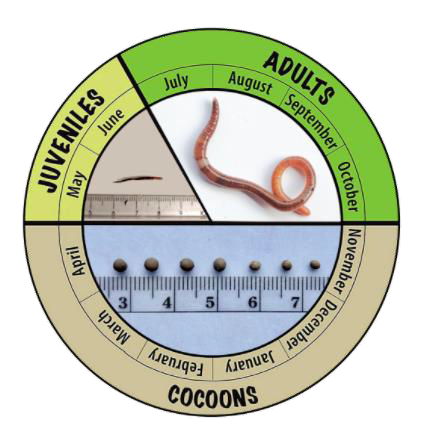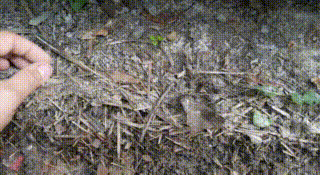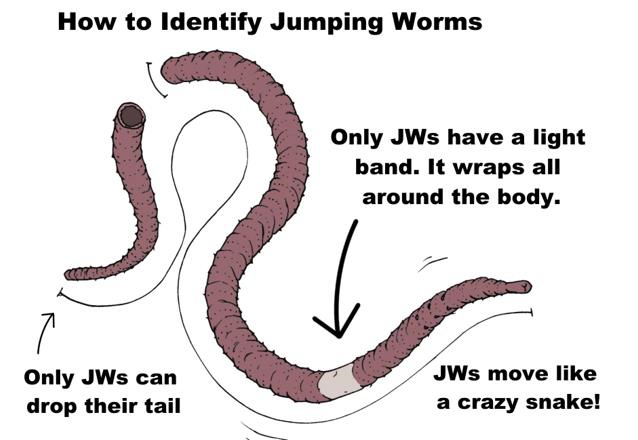Yes, the Jumping Worms are here...
They've even been positively identified in High Park! We've put together some information about this invasive pest to increase awareness, help you identify them, and let you know what you can do about reducing the spread.
Our cold Winter climate had prevented the Jumping Worm from gaining a foothold in Ontario. Since the worms and cocoons live in the top inches of soil, a severe cold for weeks can prevent their spread. With recent Winter warming however, the worms have been found in our soil, including the GTA. The only prevention of further spread is now up to individuals and the gardening community.
Why Are They A Problem?
Jumping Worms can kill plants by removing nutrients from the soil. They are such voracious consumers that they quickly eat through leaves and groundcover, leaving little to break down further for plants. What is left behind are crusty pellets which easily wash away, leaving nothing behind to feed the soil or retain moisture. Once they get into a natural ecosystem they will completely change it and reduce biodiversity.
There are currently no controls or pesticides to stop Jumping Worms once they are in a garden or natural area. One cocoon is enough to infest a garden. Early detection and rapid response are critical.
Identifying Jumping Worms
Since Jumping Worms die off in the winter, look for cocoons (eggs), similar to the size of soil, in early Spring. Areas that may have Jumping Worms have soil that has a texture similar to coffee grounds. In late May young worms begin to appear.

Look for unusually active worms.

John Abrams, CC BY 4.0 , via Wikimedia Commons
Test by disturbing the worm and observe how convulsively it moves (see links at end for bringing worms to soil surface to identify).

Stopping the Spread of Jumping Worms
Confirm with anyone sharing plants that their soil is free of Jumping Worms. Many gardeners are not yet aware of the problem. Also check with your garden centre if they are screening for Jumping Worms and use heat treatment on mulch or soil.
Shoes / boots used in your garden should not be used in other natural areas. Clean shoes / boots when arriving home from a hike, or a visit to another garden or garden centre. Before visitors enter your garden, brush off footwear or wrap in plastic bags when entering your garden area.
Ask garden centres if their products (plants, soil, mulch) are free of jumping worms.
Planting Garden Stock
Always check the soil of plant containers for cocoons or castings, or bare root stock prior to planting, or when introducing new plants to your garden wait with planting until later in the season when worms are more mature and easier to identify.
Moving plants from garden to garden will accelerate the spread of these pests. The Hort wants member divisions for the Plant Fair, but we do not want to spread this worm. This year divisions will have to be carefully prepared, with no soil from anyone's garden going anywhere.
Sharing Plants?
Bare root your plants and rinse away soil in a bucket of water, or spray with a powerful hose nozzle. Make sure all soil is removed from between roots. Here is a video link for cleaning plant roots for making divisions. This is the only way donated garden stock for the May Plant Fair will be accepted. (The video is somewhat ironic because they are digging up an invasive plant for replanting, to show how to remove an invasive pest!)
Re-pot plant into a well cleaned pot, with commercially produced potting mix. Store the pot off the soil, somewhere the worms can not get to!
Do not accept plants with garden soil - OR - rinse off soil into a bucket, strain the water through fine fabric (old t-shirt) so nothing but water goes through it, and then solarize the soil to kill worm eggs.
To solarize soil, put it into a black plastic bag and leave it in the sun. Jumping worms and their cocoons cannot survive temperatures above 40C for 3 days, after which he soil should be safe to re-use in the garden. (What a pain, best not to accept plants with garden soil!)
Resources
Thank you to the Ontario Master Gardeners for their excellent information and images used in this newsletter. https://mgoi.ca/resources/
The OHA has an excellent comprehensive pdf with LOTS of info: https://gardenontario.org/wp-content/uploads/JWs-information-Dealing-with-infestations-in-your-garden.pdf
And more info about them here: https://gardenontario.org/jumping-worms/
Canadian Invasive Species web page https://www.invasivespeciescentre.ca/invasive-species/meet-the-species/land-and-animal-invertebrates/jumping-worms/
University of Minnesota has latest findings about Jumping Worms - 1 hour long presentation to a Garden club. REALLY GOOD!
Interesting article from the Atlantic, with mention of Canada: https://www.theatlantic.com/science/archive/2020/01/jumping-worms-are-taking-over-north-american-forests/605257/
- Annelies Groen & Emieke Geldof
If you have any questions or comments, please contact us at info@parkdaletorontohort.com.